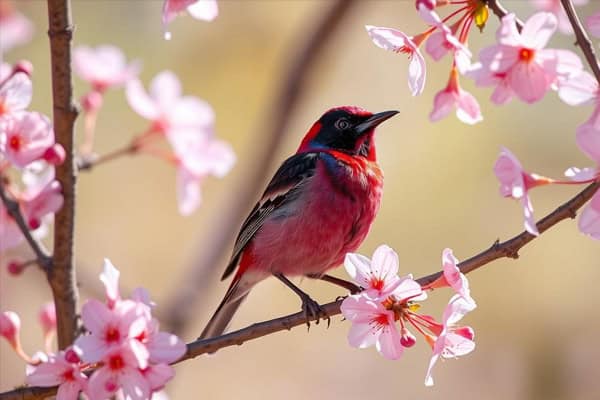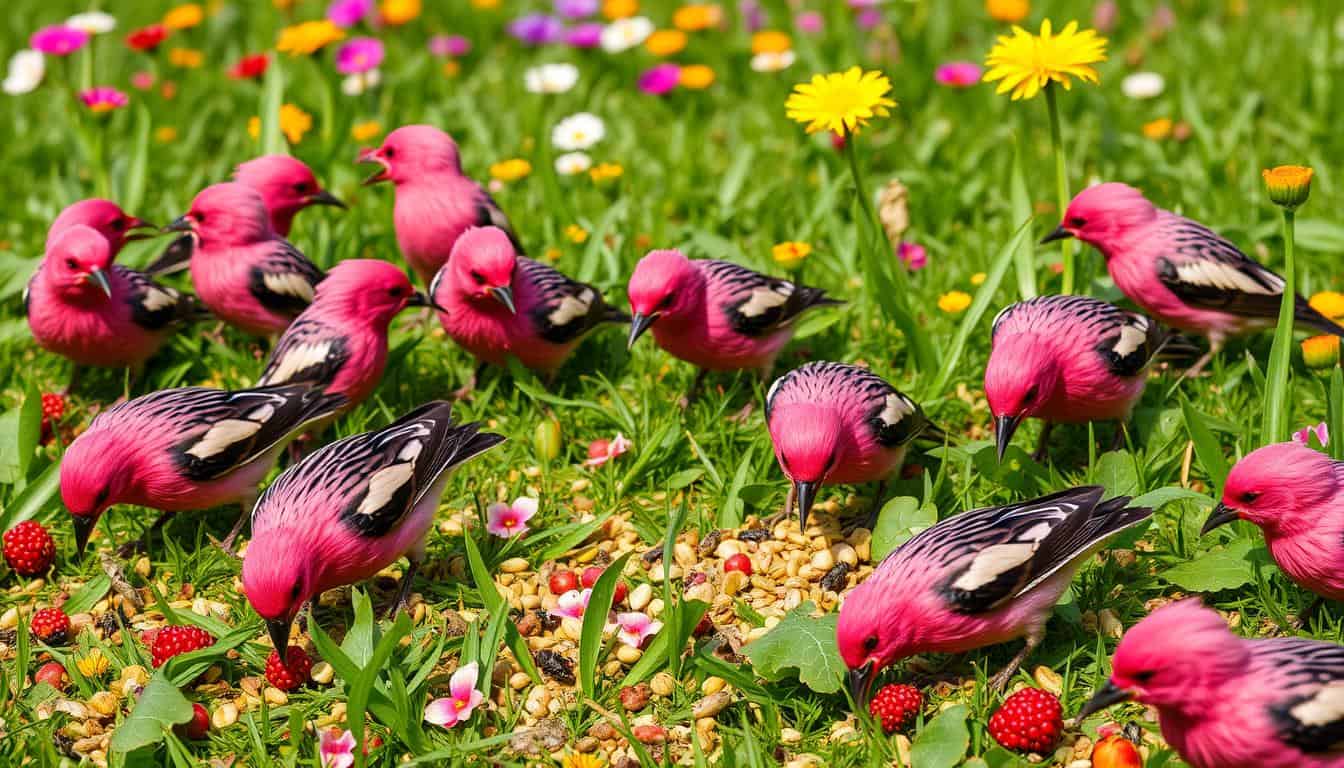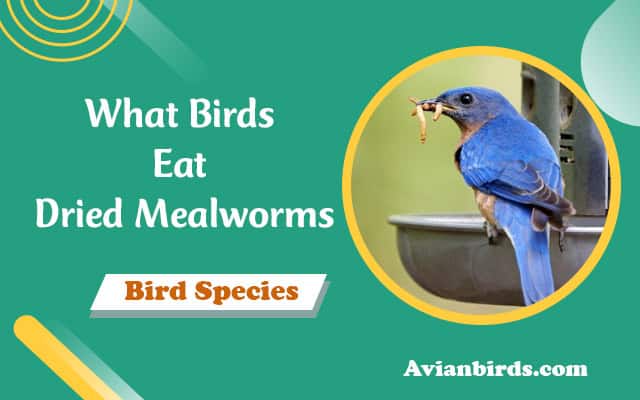Discover the Mesmerizing World of Rosy Starling
Did you know 90% of recent Rosy Starling sightings are young birds that are strongly attracted to artificial nests? This shows how fast these birds grow and breed. The Rosy Starling, or Pastor Roseus, is especially interesting because of its beautiful feathers.
This bird is not just pretty. It also loves to be with others, flying in huge groups. Let’s learn more about the Rosy Starling’s special traits, where it lives, what it eats, and how it interacts with others.
Introduction to the Rosy Starling
The Rosy Starling, known as Pastor Roseus, is a bird that fascinates many. It belongs to the Sturnidae family and the Passeriformes order. This bird is loved by bird watchers and scientists for its unique lifestyle.
It lives mainly in Europe and parts of Asia. Its bright colours are most seen from May to June, attracting birdwatchers on platforms like eBird. Males have black and pink feathers, while juveniles have brown feathers.

These birds are known for their bright looks. They show off their vibrant wings and tail colours to find a mate. They also build nests in trees or man-made places, showing they can adapt well to using artificial nests.
The Rosy Starling is a gregarious bird that loves to be with others. They flock together to find food, often searching for nectar and cereal crops. In cities like Ahmedabad, India, they gather on bridges.
They help control pests by eating insects. This makes them a favourite among bird watchers. Their beauty and usefulness make them special.
| Attribute | Details |
|---|---|
| Scientific Name | Pastor roseus |
| Family | Sturnidae |
| Order | Passeriformes |
| Type Locality | Lapland and Switzerland |
| First Described By | Linnaeus in 1758 |
| IUCN Status | Least Concern |
| Breeding Behavior | Monogamous with cooperative nesting |
| Dietary Contribution | Pest control, especially locusts |
Distinctive Features of the Rosy Starling
The rosy starling, or Pastor roseus, is a medium-sized bird with unique features. Its colour and physical traits, including a striking rump, make it stand out. These characteristics show the beauty and adaptability of this sturnus species.
Coloration and Plumage
The rose-coloured starling’s colour is one of its most striking features among the birds of the world. Males have pinkish undersides and glossy black heads, which are key physical traits for identification, particularly the covert feathers. This bright plumage is more vibrant during the breeding season, helping them attract mates.
Young rosy starlings are much paler, with browns and whites. This helps them hide from predators. The change in plumage is an important adaptation for survival and finding a mate.
Size and Physical Traits
Adult rosy starlings are 21-24 cm long, making them medium-sized. They have long wings for fast flight and a bill that changes colour. Males have shorter crests than females.
This diversity in physical traits helps them adapt to different habitats. It allows them to thrive in various environments.
| Feature | Description |
|---|---|
| Colouration | Radiant pinkish undersides and glossy black wings |
| Plumage | Distinct changes during the breeding season for males |
| Size | The rosy starling measures 21-24 cm long, characteristic of many sturnus species. |
| Wings | Long wings aiding in swift flight |
| Bill | Colour shifts from pink (breeding) to yellow-orange (non-breeding), highlighting the changes in their upper parts. |
| Physical Traits | Shorter crests in males; less dramatic in females compared to the European Starling. |
Habitat and Distribution
The Rosy Starling lives in many places, mainly in Eastern Europe and Asia. These areas are key for breeding. They form big colonies with hundreds to thousands of birds.
They need lots of food, like insects, to feed their young. This food is rich in nutrients.
Breeding Grounds
Rosy Starlings breed in southern Ukraine and across Asia. They go as far as Kazakhstan, Western Mongolia, and eastern Turkey. They also nest in Iran, Afghanistan, and northwest China.
Sometimes, they show up as vagrants in Eastern Europe. This shows how flexible they are. They like to nest in groups, using holes in walls or stones.
Migration Patterns
Rosy Starlings are migrant birds that migrate to warmer places in the winter, including India and tropical Asia. They leave Eastern Europe in mid-July. They head to India and Sri Lanka.
This move is because of food changes in their environment, influencing their roosting patterns. They travel together, looking for places with lots of food. This helps them survive the cold weather.

Diet and Feeding Habits
The Rosy Starling feeds diet and feeding habits, including how it forages, are key to its survival and success. In the breeding season, they mainly eat insects like locusts and beetles. This diet gives them the protein they need to feed their chicks well.
Food Sources During Breeding Season
Rosy Starlings eat a variety of foods during the breeding season. Their diet includes:
- Locusts
- Grasshoppers are often found in areas where cereal crops are abundant.
- Beetles and their larvae
- Bugs and ants
- Moths and caterpillars
This variety meets the nutritional needs of adults and chicks, but sometimes it can be insufficient to feed the birds. In places like China, they help control locusts, reducing the need for insecticides.
Adaptability in Feeding
Rosy Starlings are very adaptable in what they eat. Outside the breeding season, they eat fruits like grapes and figs. During migration, they also eat grains like jowar.
This flexibility shows their ability to thrive in different habitats, including the steppe. It’s important for their survival as conditions change. Their varied diet shows they can adapt to new challenges, helping them stay strong.

Social Behavior and Flocking
Rosy Starlings are fascinating because they flock together in large groups, much like the common starling. These groups help them interact and stay safe. They move in sync, showing community and survival skills.
They use sounds to talk to each other. This helps them work together and stay alert for danger.
Flocking Dynamics
Rosy Starlings roost in flocks because it’s in their nature. This helps them avoid predators. Being in a big group makes it harder for predators to find them, similar to other birds in the world.
Each bird helps keep the group safe. They all watch out for danger together.
Murmuration Phenomenon
The murmuration is a stunning sight. At dusk, the birds create amazing patterns in the sky. These patterns help them avoid predators.
Studies show that when predators are near, the patterns get even more complex. This makes it harder for predators to find a target. It’s a beautiful way for the birds to stay safe.
| Aspect | Description |
|---|---|
| Flocking Size | Thousands of individuals can form a single flock, demonstrating their gregarious nature. |
| Communication | Vocalizations convey social cues and coordination. |
| Predator Defense | Flocking reduces individual risk through collective movement. |
| Murmuration Purpose | Creates confusion for predators and enhances safety. |
| Aerial Displays | Visually striking patterns are displayed during dusk. |
Conclusion
The Rosy Starling is a bird that catches the eye with its beauty and importance to nature. It attracts birdwatchers and nature lovers. This bird helps control pests, which is key to healthy ecosystems and is recognized by BirdLife International.
Learning about Rosy Starling’s habits shows us its value in nature. It eats flowers rich in antioxidants. This helps us see why we must protect its home.
Let’s celebrate Rosy Starling’s journey and protect the wonders it brings to our skies. By understanding these birds, we grow to love our environment more and appreciate the diversity of birdlife internationally. Let’s ensure future generations can enjoy the beauty and importance of the rose-coloured starling as documented in the handbook of the birds.
Read More🐦Related Articles:
| Common Ostrich (Struthio camelus) |
| Brahma Chicken Care Tips & Facts for Enthusiasts |
| What Do Owls Eat |
| Ducks in Hawaii |
| Hummingbirds in Maryland |
Frequently Asked Questions
Q1. Are rosy starlings rare?
Rosy starlings are not considered rare globally, but their populations can fluctuate, and they are sometimes less common in certain areas.
Q2. What are the interesting facts about rosy starling?
Rosy starlings are known for their striking plumage, especially during the breeding season, when males display bright pinkish bodies and glossy black wings. They also migrate long distances and are social birds, often found in large flocks.
Q3. How big are rosy starlings?
Rosy starlings are medium-sized birds, measuring about 22 to 25 cm (8.7 to 9.8 inches) in length.
Q4. What is a rosy starling?
The rosy starling (Pastor roseus) is a species of bird in the starling family, known for its colourful plumage and sociable behaviour.
Q5. What is the 2 rarest bird?
The second rarest bird is often considered to be the Spix’s macaw, which is critically endangered and believed to be extinct in the wild.
Q6. What is the top 1 rarest bird?
The rarest bird is commonly cited as the Kakapo, a flightless parrot from New Zealand that is critically endangered.
Q7. Which bird has a pink breast?
The rosy starling has a pinkish body, particularly noticeable in males during the breeding season.
Q8. Are starlings intelligent?
Yes, starlings are known for their intelligence, including problem-solving abilities and adaptability to various environments.
Q9. Is a starling aggressive?
Starlings can be aggressive, especially when competing for food or nesting sites, but their behaviour varies by situation.
Q10. Can starling birds talk?
Yes, starlings are capable of mimicking sounds, including human speech, and can learn a variety of vocalizations.
Q11. What is the lifespan of a starling?
The average lifespan of a starling is about 2 to 3 years in the wild, though some can live longer under favourable conditions.






